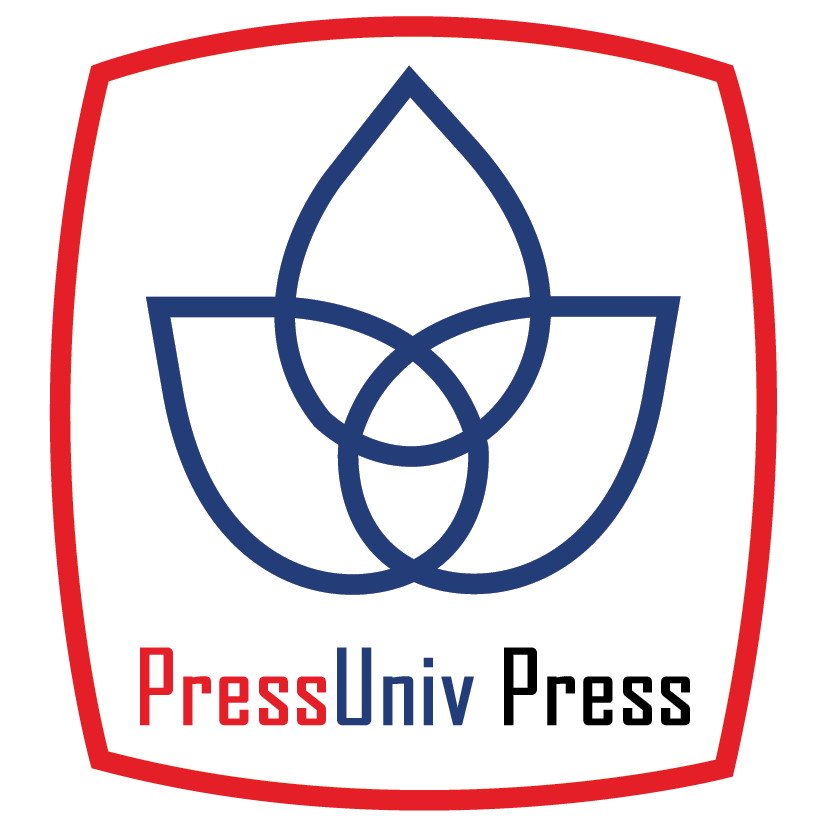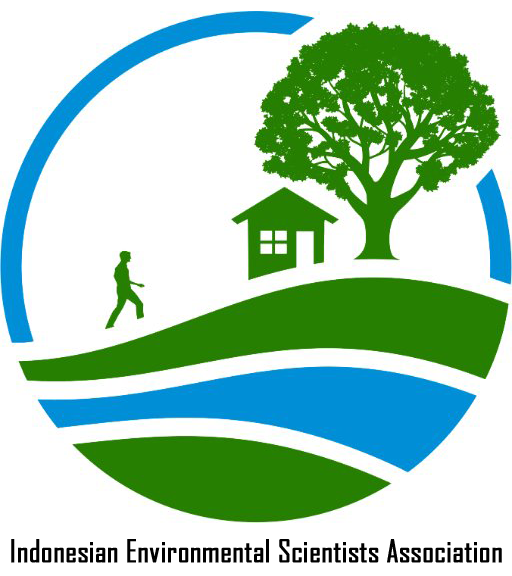PENERAPAN MODEL FUGASITAS PADA PENCEMARAN DDT DI WADUK SAGULING
Abstract
Saguling reservoir is an artificial reservoir located in West Bandung regency at an altitude of 643 m above sea level and serves to stem the Citarum River which is the largest river in West Java. Upper Citarum River has detected the organochlorine insecticide, one of them iss DDT. It is feared that DDT can accumulate in Saguling Reservoir which is the first dam to stem the Citarum River. This is very worrying given Saguling has greatly affect to the lives of many people. This study was conducted to estimate the fugacityvalue and concentration of DDT in each environmental compartment, such as in water, sediment, fish, aquatic plants, and mollusks by using Fugacity models. From calculation result, average DDT fugacity in the air is 3.23.10-14Pa, on the soil 2.73.10-17Pa, in the water 1.78.10-9 Pa, in sediments 9.64.10-10Pa. DDT concentration in the air compartment at Saguling Reservoir is 9,1.10-12ppm, on the ground 4,5.10-11ppm, in the water 6,9.10-4ppm, in sediments 0.99ppm, in the fish 0.013ppm, in the aquatic plant 0.005ppm, and in the mollusk 0.002ppm. Fugacity models are useful in predicting the distribution of DDT in each environmental compartment in Saguling Reservoir.
Keywords
Full Text:
PDFReferences
Caldas E.D., Coelho R., Souza L.C.K.R., dan Ciba S.C. (1999). Organochlorine Pesticide in Water, Sediment, andFish of Paranoa Lake of Brazilia Brazil. Bulletin of Environmental Contamination and Toxicology,62(2), 199-206.
Cioce, D. (2008). The Patterns of Distribution of Organochlorine Pesticides in Sediment in the Letort Spring Run, Cumberland County, Pennsylvania. Department of Environmental Studies: Dickinson College
Dewi, Y.P. (2012). Perubahan Kandungan Asam Lemak dan Kolesterol Keong Mas (Pomacea canaliculata) Akibat Proses Pengolahan. Tugas Akhir Sarjana: Departemen Teknologi Hasil Perairan, Institut Pertanian Bogor.
Li, Q., Zhu T., Qiu X., Hu J., dan Vighi M. (2006). Evaluating The Fate Of P,P’-DDT In Tianjin, China Using A Non-Steady-State Multimedia Fugacity Model. Ecotoxicology And Environmental Safety 63, 196-203.
Mangisah, I., Sukamto, B. dan Nasution, M H. (2009). Implementation of Fermented Eceng Gondok In Duck Ration. Journal of the Indonesian Tropical Animal Agriculture, 34 (2). pp. 127-133. ISSN 0410-6320
MacDonald, D.D., C.G. Ingersoll, dan T.A. Berger. (2000). Development and evaluation of consensus based sediment quality guidelines for freshwater ecosystems. Arch. Environ. Contam. Toxicol. 39:20-31.
Mackay, D. (2001). Multimedia Environmental Models. Boca Raton: CRC Press LLC
Mackay, D., Shiu, W.Y., Ma, K.C., dan Lee, S.C. (2006). Physical-Chemical Properties and Environmental Fate for Organic Chemicals, Volume IV, Nitrogen and Sulfur Containing Compounds and Pesticides. Lewis Publishers, Boca Raton, FL.
Rahmawati, S. I. (2012). Distribusi Organoklorin Pada Air, Sedimen, Moluska Dan Ikan Di Waduk Saguling. Tugas Akhir Sarjana: Program Studi Teknik Lingkungan, Institut Teknologi Bandung
Retno, R. (2012). Analisis Resiko Organoklorin Pada Manusia Pengonsumsi Ikan Nila (Oreochromis Niloticus) Dari Waduk Saguling. Tugas Akhir Sarjana: Program Studi Teknik Lingkungan, Institut Teknologi Bandung
Riwinta, R. (2012). Bioakumulasi Insektisida Organoklorin Pada Tanaman Air Di Waduk Saguling. Tugas Akhir Sarjana: Program Studi Teknik Lingkungan, Fakultas Teknik Sipil dan Lingkungan, Institut Teknologi Bandung
Rochmanti. (2009). Identifikasi Penggunaan Organoklorin di Daerah Aliran Sungai Citarum Hulu, Desa Kertasari. Tugas Akhir Sarjana: Program Studi Teknik Lingkungan, Institut Teknologi Bandung
Sarafiloska, E. V., dan Jordanoski, M. (2011). Study of Organochlorine Pesticide Residues In Water, Sediment And Fish Tissue In Lake Ohrid (Macedonia/Albania). Macedonian Journal of Chemistry and Chemical Engineering, Vol. 30, No. 2, pp. 163–179.
Smith, D., Silver, E., dan Harnly, M. (2006). Environmental Samples Below The Limits Of Detection – Comparing Regression Methods To Predict Environmental Concentrations. California Department of Health Services, California.
Wang,C., Feng, Y., Sun, Q., Zhao, S., Gao, P, dan Li, B. L. (2012). A multimedia fate model to evaluate the fate of PAHs in Songhua River, China.Environmental Pollution, 164 : 81-88
Wibowo, N. (2010). Analisis Kandungan Endosulfan Pada Air, Sedimen, Dan Ikan Serta Potensi Akumulasi Pada Organ Hati (Studi Kasus Sungai Citarum Hulu). Tugas Akhir Sarjana: Program Studi Teknik Lingkungan, Institut Teknologi Bandung
Xu, F.L., Qin N. , Zhu Y., He W., Kong X.Z., Barbour M. T., He Q.S., Wang Y., Ou-Yang H.L., dan Tao S. (2012) : Multimedia fate modeling of polycyclic aromatic hydrocarbons (PAHs) in Lake Small Baiyangdian, Northern China. Ecological Modelling.http://dx.doi.org/10.1016/j.ecolmodel.2012.04.010
DOI: http://dx.doi.org/10.33021/jenv.v1i2.124
Copyright (c) 2017 Yandes Panelin

This work is licensed under a Creative Commons Attribution-ShareAlike 4.0 International License.
Journal of Environmental Engineering and Waste Management Published by PresUniv Press, in collaboration with IESA and APIK Indonesia Network




